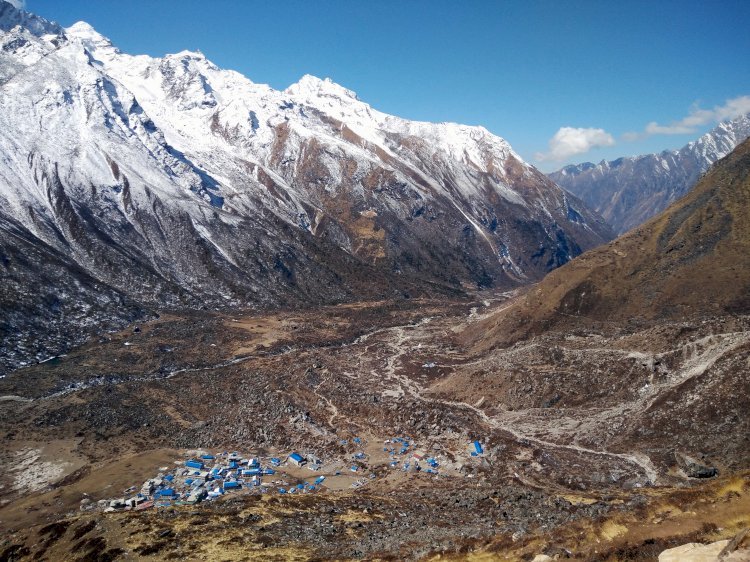How to Prepare for the Langtang Valley Trek: Tips and Essentials

The Langtang Valley Trek is an awe-inspiring journey through the majestic Himalayan region of Nepal. This trek is famous for its breathtaking scenery, tranquil environment, and the opportunity to experience Nepal’s rich cultural heritage. As with any trekking adventure, proper preparation is key to ensuring a smooth and enjoyable experience. Whether you're an experienced trekker or a beginner, it’s important to be well-prepared physically, mentally, and with the right gear. In this blog post, we’ll discuss how to prepare for the Langtang Valley Trek so that you can make the most of your adventure in one of Nepal's hidden gems.
Physical Preparation for the Langtang Valley Trek
Before setting out on the Langtang Valley Trek, it’s important to focus on building your physical stamina. Although the trek is considered moderate in difficulty, it involves several days of uphill trekking, which can be physically demanding. Preparing your body for the rigors of trekking will help ensure that you’re in top shape for the challenges that lie ahead.
Start Your Training Early
Begin your physical preparation at least 6-8 weeks before your trip. Cardiovascular exercises such as hiking, running, swimming, or cycling will help improve your endurance and stamina. Hiking on uneven terrain or using a stair climber is particularly helpful, as it simulates the uphill walking you’ll experience on the Langtang Valley Trek.
Additionally, strengthening your leg muscles, especially your calves and thighs, is essential. Exercises like lunges, squats, and step-ups will help you build the necessary strength for long ascents and descents. Don’t forget to work on your core, as a strong core will provide stability while trekking on rugged paths.
Acclimatization is Key
One of the most important aspects of trekking in high-altitude regions like Langtang is acclimatization. The Langtang Valley Trek reaches elevations above 3,800 meters, which can pose a risk of altitude sickness. To reduce the chances of altitude sickness, take your time during the ascent, and ensure that you spend a rest day or two at key points, such as Kyanjin Gompa.
Rest days allow your body to adjust to the reduced oxygen levels at higher altitudes. Make sure to listen to your body and seek medical attention if you experience symptoms of altitude sickness, such as headaches, dizziness, or shortness of breath.
Essential Gear for the Langtang Valley Trek
Packing the right gear is crucial to your comfort and safety during the Langtang Valley Trek. Since the weather can be unpredictable, with temperatures varying from warm at lower elevations to cold at higher altitudes, it’s important to be prepared for all conditions.
Footwear
A high-quality pair of trekking boots with ankle support is essential for the Langtang Valley Trek. The trail can be rocky, muddy, and uneven, so having waterproof boots with good grip will help prevent slips and keep your feet dry. Be sure to break in your boots before the trek to avoid blisters.
Clothing
Layering is key when trekking in the Langtang Valley. Here’s a recommended clothing list for the trek:
- Base Layers: Moisture-wicking shirts and long pants to keep sweat away from your skin.
- Mid Layers: A fleece jacket or down sweater to keep you warm during colder days and nights.
- Outer Layer: A waterproof, windproof jacket to protect against rain and wind, particularly in the higher elevations.
- Trekking Pants: Quick-drying and breathable pants are perfect for comfort on the trail.
- Thermal Gear: Pack warm gloves, a hat, and thermal socks for extra warmth, especially at higher altitudes.
Additional Gear
In addition to clothing and footwear, here are some essential items to bring:
- Trekking Poles: These can significantly reduce strain on your knees, especially during steep descents.
- Headlamp: A reliable headlamp with spare batteries is crucial, as power outages are common in the region.
- Water Bottles: Hydration is important at higher altitudes, so bring reusable water bottles and purification tablets to ensure access to clean water.
- Sunscreen: The sun’s rays can be intense at high altitudes, so pack a high-SPF sunscreen to protect your skin.
Health and Safety Tips for the Langtang Valley Trek
Staying healthy and safe during the Langtang Valley Trek is crucial for an enjoyable journey. Follow these health and safety tips to ensure that you have a worry-free adventure.
Stay Hydrated
Drinking plenty of water is essential to avoid dehydration and altitude sickness. Aim to drink at least 3 liters of water per day. Carry a water bottle and purification tablets, as clean water sources may not always be readily available.
First-Aid Kit
A basic first-aid kit is a must-have for any trek. Include items such as pain relievers, antiseptic creams, blister treatment, band-aids, and any personal medications you may need. Be prepared for minor injuries or illnesses.
Travel Insurance
It’s highly recommended to get comprehensive travel insurance that covers emergency medical evacuation, trip cancellations, and trekking in high-altitude regions like Langtang. This insurance can provide peace of mind if anything unexpected happens during your trek.
Conclusion
The Langtang Valley Trek is a remarkable adventure through one of Nepal’s most scenic and culturally rich regions. Proper preparation, both physical and logistical, is essential to ensure that you enjoy the trek to the fullest. By training in advance, packing the right gear, and following health and safety tips, you can embark on this journey with confidence.
The trek to Langtang Valley will reward you with stunning landscapes, unforgettable experiences, and a deeper appreciation for the natural beauty of the Himalayas. So, get ready, prepare well, and set off on the adventure of a lifetime in one of Nepal’s hidden gems!
What's Your Reaction?















